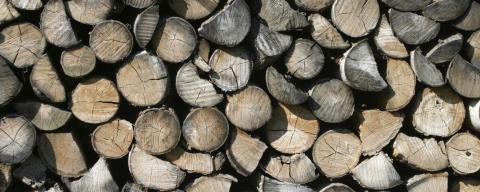Drying Firewood
All wood burns, but wood that's cut green (between 50 and more than 100 percent moisture content) burns with more difficulty, because the water in the wood must be boiled off before the actual wood fiber can burn. Air-dried ("seasoned") wood is generally around 30 percent. Kiln-dried firewood generally contains less than 20 percent moisture.
Green wood can produce more creosote--a black sooty liquid which deposits and hardens on the inside of your chimney and can ignite, causing a chimney fire.
Newer wood stoves, especially those with catalytic combustors, require dry wood. Using green wood in a catalytic-combustor stove may damage the stove. Follow the stove manufacturer's recommendations about the size and moisture content of the fuel.
The best fuel option for any woodstove is split, seasoned wood with a moisture content between 20 and 30 percent. If you buy unsplit wood, splitting the wood into smaller pieces is critical to speeding the drying process.
The best method for drying wood is to build a rack that gets the firewood off of the ground and allows air to circulate around the stack. An open, sunny location with good airflow on all sides of the stack or pile is best. Keeping the wood off the ground and trimming back any vegetation will also discourage insects from finding a home in your woodpile.
Woodpiles can be left uncovered for maximum air flow or covered--but cover the top of the pile only. Covering the top prevents rain from penetrating the stacked wood, yet allows for air to circulate. Drying time varies with weather conditions and wood species. Generally, the heavier the wood, the longer it takes to dry.
How do you know when the wood is dry?
Scientific methods for determining the moisture content of a piece of wood aren't practical for the firewood dealer or the homeowner. Firewood dealers and those who have burned wood for many years tend to use their experience. As the wood dries it cracks open and becomes lighter.
Again, green or partially seasoned wood can be burned in many stoves; it just takes a hotter fire to drive the excess water out of the wood. Remember, burning green wood can damage stoves, particularly those with catalytic combustors.
Burning wood requires hard work and perseverance. When done safely and correctly, it can reduce heating costs for those confronted with escalating oil prices.

